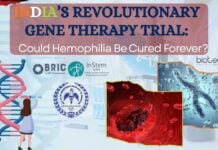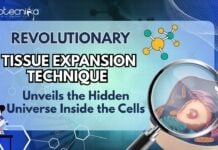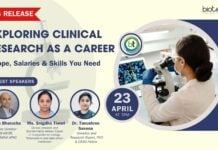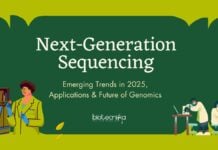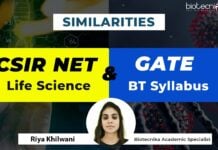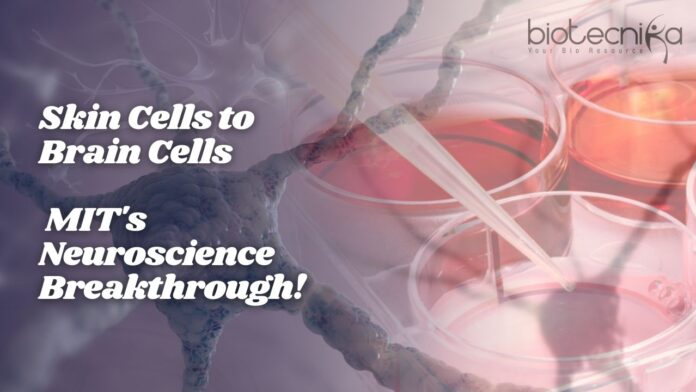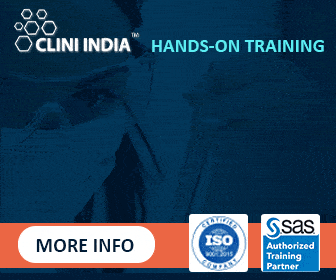What if Your Skin Cells Could Become Brain Cells?
In a stunning feat of cellular alchemy, scientists at the Massachusetts Institute of Technology (MIT) have disclosed a revolutionary technique that transmutes ordinary skin cells into functional neurons.
Traditionally, scientists have had to first convert skin cells into induced pluripotent stem cells (iPSCs), an embryonic stem cell-like state that can differentiate into many other types of cells. It works, but it takes several weeks, and many cells don’t completely transform into mature cells. Bypassing the arduous and time-consuming intermediate stage of induced pluripotent stem cells (iPSCs). Nathan Wang, an MIT graduate, published papers on this groundbreaking discovery in Cell Systems.
The MIT team, led by Katie Galloway, a luminary in biomedical and chemical engineering at MIT, has devised a streamlined approach that turns skin cells into neurons directly, using a combination of three key transcription factors, producing more than ten neurons from a single skin cell in mice, with promising early results in human cells.
Breaking free from the Bottleneck
“Reprogramming cells is like trying to push a car uphill—many get stuck in intermediate states and never reach their final destination,” explains Galloway. “With direct conversion, we bypass the stem cell detour entirely and go straight from a skin cell to a motor neuron.”
This streamlined approach builds on previous research, which had demonstrated the potential for direct conversion but suffered from abysmally low yields—often less than 1%. The stumbling block? Complexity. Early methods required a bulky cocktail of six transcription factors plus additional proteins to stimulate proliferation, each introduced via separate viral vectors. Ensuring precise expression levels across all cells was nearly impossible.
How Did They Do It?
The team identified that reducing the number of transcription factors to just three might do the deal, as three essential transcription factors—NGN2, ISL1, and LHX3- can drive the transformation of skin cells into motor neurons. The simplification meant that all three genes could now be packaged within a single modified virus, ensuring consistent expression across all cells.
To further amplify efficiency, the researchers introduced two additional genes—p53DD and a mutated form of HRAS—designed to push the skin cells into a hyperproliferative state.
“If you were to express the transcription factors at really high levels in nonproliferative cells, the reprogramming rates would be really low, but hyperproliferative cells are more receptive. It’s like they’ve been potentiated for conversion, and then they become much more receptive to the levels of the transcription factors,” Galloway says.
By using a retrovirus to deliver these factors, researchers found they could achieve neuron conversion rates of over 1,000% in mouse cells. They also developed transcription factors that enabled similar conversions to be made using human cells; early estimates suggest conversion rates between 10-30%—a promising start that could lead to further refinements.
The big question was: Would these lab-grown neurons function like their natural counterparts?
When these neurons were cultured in a dish, the neurons displayed robust electrical activity and calcium signaling, proposing their capability of communicating with other neurons.
MIT researchers, in collaboration with scientists at Boston University, engrafted these motor neurons into the cranium (Involved in motor functions )of mice. Within two weeks, the transplanted neurons had not only survived but had begun forging connections with host brain cells, integrating seamlessly into the neural network.
“This is the first step toward demonstrating that these neurons could one day be used in cell replacement therapies,” says Galloway. “The fact that they survived, integrated, and showed electrical activity is incredibly promising.”
Why Does This Matter? What next?
Currently, clinical trials using iPSC-derived neurons for ALS treatment are underway. The amount of neurons required for effective regeneration therapy is high.
“Cell therapy has always been a numbers game,” says Galloway. “If we can generate neurons at scale with high efficiency, it could completely change how we approach diseases that have long been considered untreatable.”
With every experiment, Galloway and her team are inching closer to a future where lost neurons can be replaced, spinal cord injuries can be repaired, and neurodegenerative diseases can be halted in their tracks. And perhaps, one day, skin cells will hold the key to unlocking the brain’s secrets.


